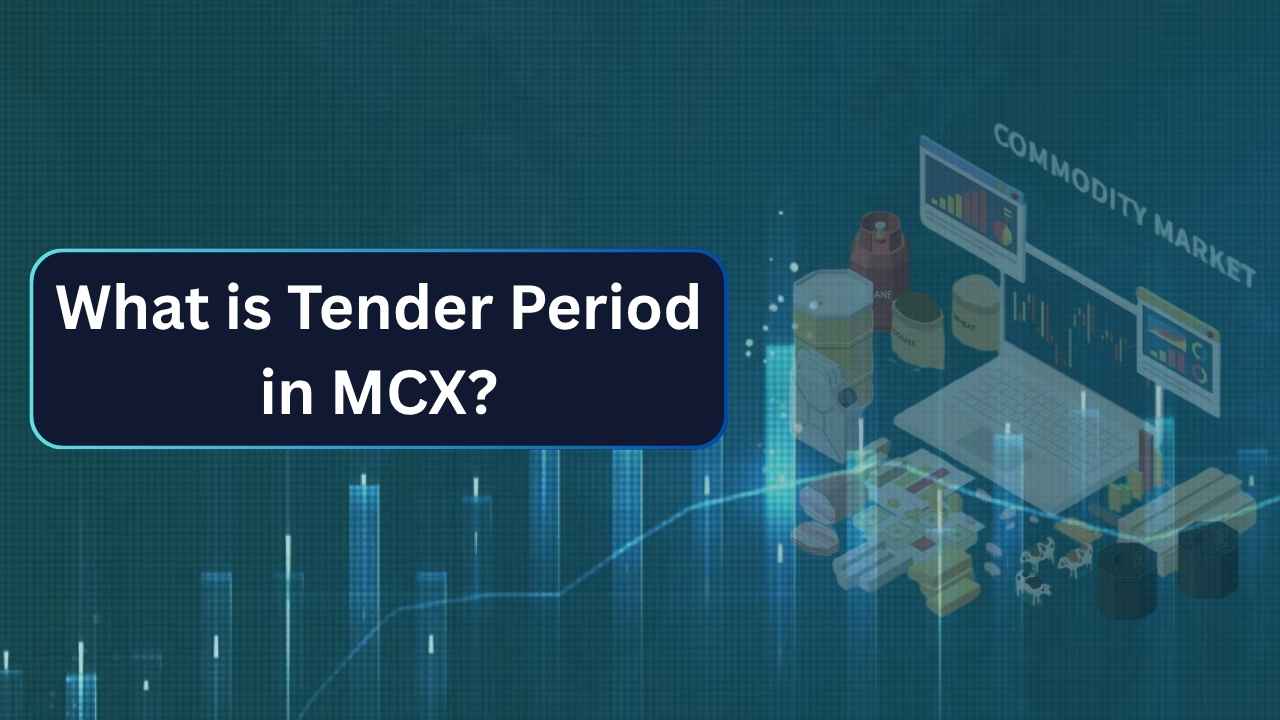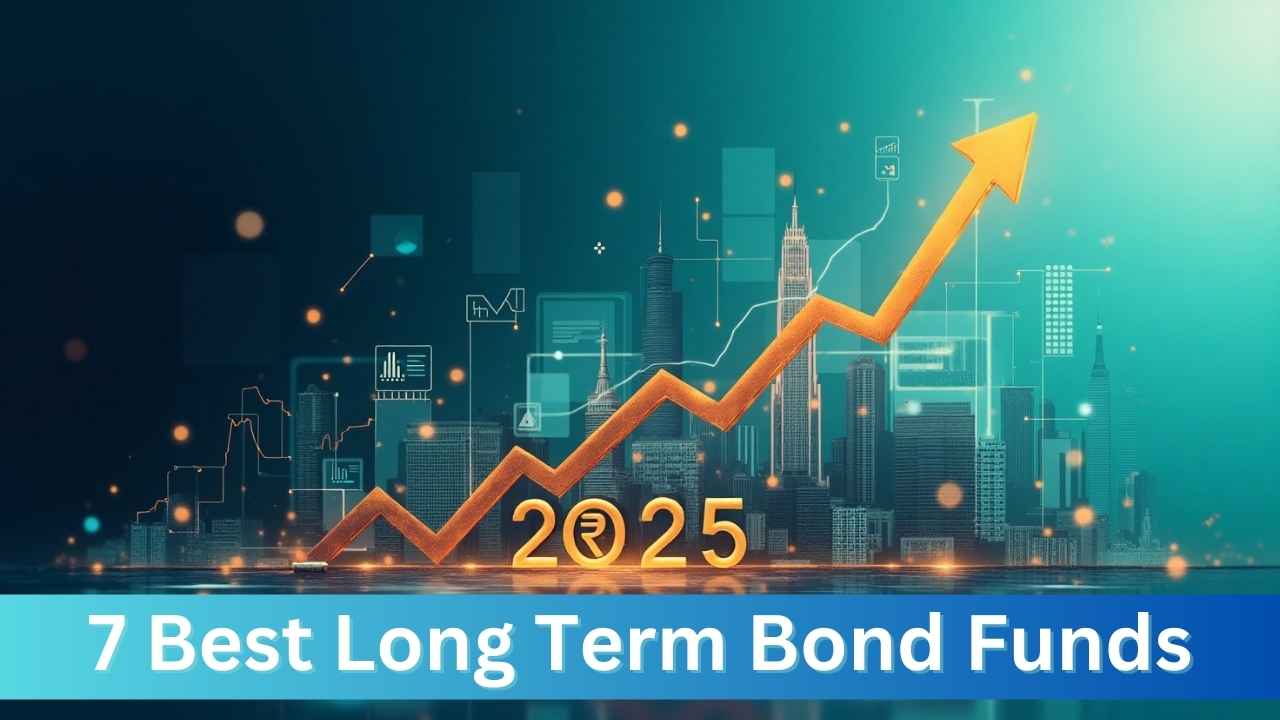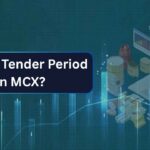If you trade in commodities on the Multi Commodity Exchange (MCX), you might have come across the term “Tender Period.” It’s one of those phrases that sounds technical but is very important for every trader to understand — especially if you trade in futures contracts.
Many new traders ignore this part, and as a result, they face unexpected delivery obligations or penalties. So, let’s break it down in simple language.
In this blog, you’ll learn what the meaning of the tender period is, why it exists, when it starts, and how you can manage your positions properly to avoid unnecessary problems.
What is Tender Period in MCX?
The tender period is a specific time frame before the expiry of a commodity futures contract during which traders can express their intention to deliver or take delivery of the commodity.
In simpler words, this is the time when sellers (short position holders) can say, “I am ready to deliver the physical commodity,” and buyers (long position holders) can say, “I am ready to take the delivery.”
This period ensures that the physical settlement of commodities happens smoothly.
Not all traders are interested in taking or giving actual delivery — many trade only for price movements. But once the tender period begins, the focus slowly shifts from trading on price to actual delivery and settlement.
When Does the Tender Period Start in MCX?
The tender period usually starts five working days before the contract expiry date of a particular commodity.
For example:
If a gold futures contract expires on the 5th of July, the tender period generally starts on the 29th of June (five business days before expiry).
During these days, sellers can tender (offer) the commodity for delivery, and buyers can be assigned the delivery obligation by the exchange.
However, this can slightly vary depending on the commodity type, so always check the MCX contract specifications for the exact tender period dates.
Why is the Tender Period Important?
The tender period is a critical part of commodity trading because it ensures a fair and transparent settlement system. Here’s why it matters:
- Smooth Delivery Process: It allows the exchange to manage the physical delivery efficiently.
- Prevents Last-Minute Confusion: Both buyers and sellers get time to prepare for delivery before the contract ends.
- Price Stability: As the market moves from speculation to actual delivery, prices often align more closely with real market rates.
- Trader Awareness: It alerts traders who don’t want physical delivery to close or roll over their positions on time.
In short, the tender period acts as a bridge between speculative trading and real-world delivery.
What Happens During the Tender Period?
Here’s a simple breakdown of what typically happens during the tender period:
- Sellers Can Tender the Commodity:
Traders holding short (sell) positions can inform the exchange that they are ready to deliver the actual goods. - Buyers May Be Assigned for Delivery:
The exchange randomly assigns buyers (those holding long positions) to take delivery based on the tendered quantity. - Delivery Obligations Are Created:
Once matched, both parties must complete the delivery process — paying, receiving, and delivering goods according to exchange norms. - Margins and Penalties Apply:
During the tender period, margin requirements might increase. If traders fail to meet their obligations, penalties are imposed by the exchange.
So, even if you’re not planning to take or give delivery, this is the time to exit your positions or roll them over to the next month’s contract.
What Should Traders Do During the Tender Period?
If you are a trader who trades in futures just for price movements (and not for physical delivery), the tender period is your final warning zone.
Here’s what you should do:
- Check the Tender Start Date: Always know when the tender period starts for the commodity you’re trading.
- Exit Before Tender Period (If You Don’t Want Delivery): Close your open positions before this period begins to avoid getting delivery assigned.
- Monitor Margins: During the tender period, exchanges may raise margin requirements. Make sure you have enough funds or exit on time.
- Stay Updated: Check circulars and notices on the MCX website regularly — they publish tender and expiry schedules.
If you ignore the tender period, you might unintentionally become part of the physical delivery process, which can be complicated and costly if you’re not prepared.
Example of Tender Period in Action
Let’s say you’re trading in Crude Oil Futures on MCX.
- Contract Expiry Date: 20th September
- Tender Period Begins: 13th September (5 working days before expiry)
If you are a buyer (holding a long position) and don’t want physical delivery, you must exit your position before 13th September.
If you fail to do so, you may be assigned a physical delivery obligation and will have to either take delivery or face penalties.
That’s why understanding the tender period helps you avoid unwanted surprises.
How to Find Tender Period Details on MCX
To find accurate tender period details for any commodity:
- Visit the official MCX website: www.mcxindia.com
- Go to the “Contract Specifications” section.
- Select the commodity you trade (like gold, silver, crude oil, etc.).
- You’ll find details like contract expiry date, delivery unit, tender period, and delivery center.
Always cross-check this information before entering trades in near-expiry contracts.
Key Takeaways
Here’s a quick recap of what we learned:
- Tender Period Definition: Time before contract expiry when sellers offer and buyers accept delivery.
- Duration: Usually starts 5 working days before expiry.
- Importance: Ensures smooth delivery, prevents last-minute confusion, and aligns market prices with physical reality.
- Trader’s Role: Exit or roll over positions if you don’t want delivery.
- Always Stay Updated: Check MCX notifications and contract details regularly.
Understanding and respecting the tender period can save you from heavy penalties and unexpected delivery hassles.
Conclusion
The tender period in MCX may sound complicated, but it’s actually a safeguard for both traders and the exchange. It ensures that those who want to take or give physical delivery can do so smoothly, while others can exit before delivery obligations start.
If you’re a beginner in commodity trading, always remember one golden rule:
Know your contract’s tender and expiry dates before you trade.
That one small step can save you from a lot of unwanted trouble.
Learn More:
- Common Mistakes in Commodity Trading & How to Avoid Them
- Impact of Geopolitics and Natural Disasters on Commodities
- How to Open a Commodity Trading Account: A Step-by-Step Guide
- What is the Difference Between a Commodity and a Product?
- Square Off Process in the Commodity Market
FAQs
What is the tender period in MCX?
It’s the time before a commodity futures contract expires when traders can declare their intention to deliver or take delivery of the physical commodity.
When does the tender period start?
Usually, it starts five working days before the expiry date of the futures contract.
What happens if I don’t exit before the tender period?
You may be assigned delivery obligations or face penalties if you are not ready for physical settlement.
Is the tender period the same for all commodities?
No, it can vary depending on the commodity. Always check the MCX contract specification for details.
Can I trade during the tender period?
Yes, but it’s risky. Margins are higher, and there’s a chance of being assigned physical delivery, so caution is needed.










